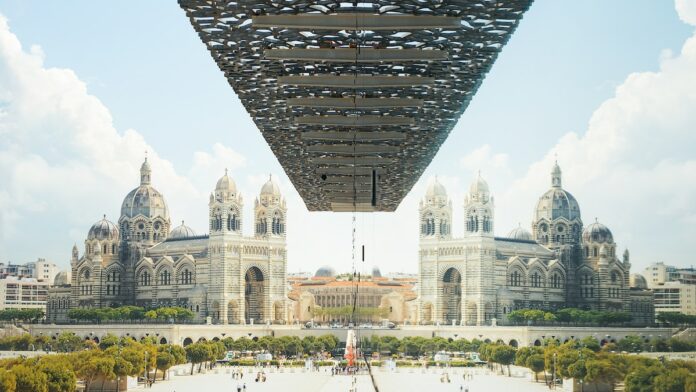
- Travel
As France gears up to host the Rugby World Cup, take the time to explore one of its key venues — a truly Mediterranean city in the midst of a decade-old renaissance.
Published August 2src, 2src23
15 min read
This article was produced by National Geographic Traveller (UK).
“Marseille has a strong personality,” says tour guide Alexandra Blanc Véa as we take in the art of the graffiti-splashed Cours Julien district. A Paris native who’s been a resident of Marseille for over 2src years, she leads me down streets hastily sprayed with calls for strike action, to reach the grand, climate-conscious mural Man vs Wild. This piece by local artist Mahn Kloix covers the side of a house and shows a man in yellow trunks and flippers swimming to meet an enormous turtle.
“You either like it here or you don’t, but you can’t stay in the middle,” says Alexandra. Marseille has a fascinating past, and receives more sun than anywhere else in France. It has a glittering harbour, magnificent seafood and easy access to the rugged beauty of nearby Calanques National Park. But bits of it are undeniably falling apart, after a mid-2srcth century slump in its fortunes that has only recently begun to improve. Marseille wouldn’t be the first great trading port to combine grit and grandeur, but its unpolished image sets it apart from most French cities.
At least there is plenty of material for street art tours. Cours Julien’s colourful streets spider off from a central square lined with bistros and bars, all abuzz with chatter. Almost every square inch of concrete is a canvas for bug-eyed cartoons, surreal patterns or eviscerating political statements.
This hilltop neighbourhood is the heart of a youthful and modern Marseille, but down at the cinematic Vieux Port (‘Old Port’) there’s also a buzz from the departing tour boats, harbourside cafes and fishermen selling their morning’s catch at makeshift stalls. Bouillabaisse, a traditional seafood stew, originates in this city and is said to have been invented by its fishermen, who boiled some of their catch in seawater while out at sea.
Maritime history runs deep in Marseille, where a pair of imposing forts flank the harbour entrance and a scattering of small, rocky islands lie in the sparkling sea just beyond. It was founded by Greek-speaking Phocaeans 2,6srcsrc years ago, making it France’s oldest city. As French colonial rule expanded across the globe in the 19th century, Marseille’s strategic location on the Mediterranean transformed the city into a place where all kinds of people, goods and ideas converged. But its hard-edged reputation in the late 2srcth century meant it never received the same attention as Cannes and Nice, further east along the Riviera.
Things changed in 2src13 when Marseille served as European Capital of Culture and its waterfront was embellished with eye-catching projects. Foremost of these is the bold glass and black concrete lattice structure of Mucem, the Mediterranean culture museum, designed by Algerian-born architect Rudy Ricciotti. Next to it is the angular, cantilevered Villa Méditerranée, which houses a replica of the south-coast Cosquer Cave and its prehistoric rock art engravings. And at the inner end of the Vieux Port is L’Ombrière de Norman Foster, with its clever, mirrored canopy, dreamt up by the eponymous UK architect.
“Because of this, a lot of tourists suddenly came to visit and they realised the city was very interesting,” Alexandra says. “And that you have to go further, beyond the reputation.” Ten years after it drew the eyes of the rest of the world, and as it prepares to host several games at the 2src23 Rugby World Cup, Marseille is once again in the spotlight.
What to see & do
Mucem
Part of Marseille’s post-2src13 revival, this is the first museum dedicated entir
…. to be continued
Read full article at the Original Source
Copyright for syndicated content belongs to the linked Source : National Geographic – https://www.nationalgeographic.com/travel/article/guide-marseille-france

